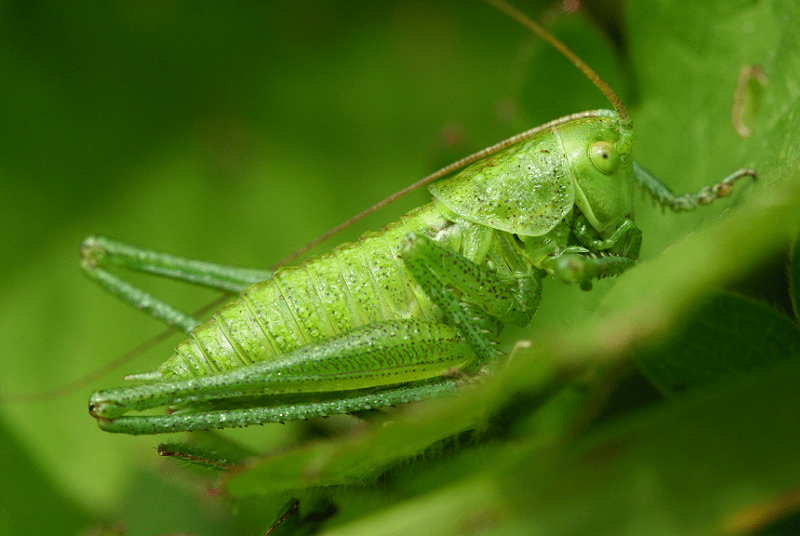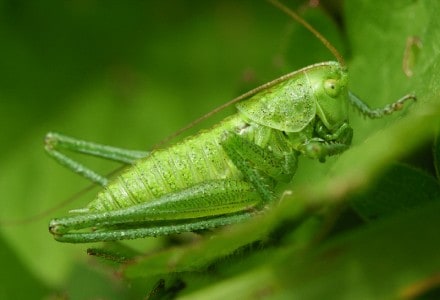
Green Bush Cricket Facts
- The Green Bush Cricket represents a rather remarkable species of katydid cricket. The fascinating invertebrate has a quite broad zone of habitation.
- Although the typically placid creature remains essentially harmless to humans, it does have the ability to deliver a painful bite if handled.
- Fortunately, its numbers appear to continue to be sufficient to maintain a stable population. Therefore, the IUCN does not currently hold a listing for the insect.
- However, like many species at this time, it now faces potential threats to its existence. These primarily include climate change and habitat loss.
Green Bush Cricket Physical Description
Like many insects, the genders of the Green Bush Cricket display a slight degree of sexual dimorphism. Females average around 1.7 in (4.3 cm) in length while males only reach about 1.4 in (3.6 cm).
True to its name, the tiny invertebrate develops as primarily green in color. However, specimens may display some yellow or brown bands on their backs.
The antennae also grow quite long and may sometimes be as much as three times the length of the creature’s body. These provide it with excellent sensory capabilities.
Kingdom: Animalia
Phylum: Arthropoda
Class: Insecta
Order: Orthoptera
Family: Tettigoniidae
Genus: Tettigonia
Species: T. viridissima
Green Bush Cricket Distribution, Habitat, and Ecology
The startling Green Bush Cricket evolved as endemic to a range extending from Mongolia to Europe. Within this region, it typically inhabits areas up to elevations of as much as 5,900 ft (1,800 m).
It has adapted to thrive in a wide variety of locations. It principally inhabits grasslands, meadows, prairies, and even people’s gardens.
Prior to mating, the males attract the females with extended singing which is a product of rubbing their forewings together at high speeds. The female subsequently deposits the eggs in patches of soft, dry dirt.
This she does with her comparatively long ovipositor which may reach a length of as much 1.25 in (32 mm).
The larvae develop as bright green from the moment of birth.
The invertebrate evolved as primarily arboreal and also entirely carnivorous. Their diet consists mostly of caterpillars, flies, and various larvae.
Check out our other articles on Desert Locust, Toad Bug, Magicicada, Click Beetle, Mole Cricket

